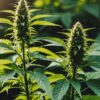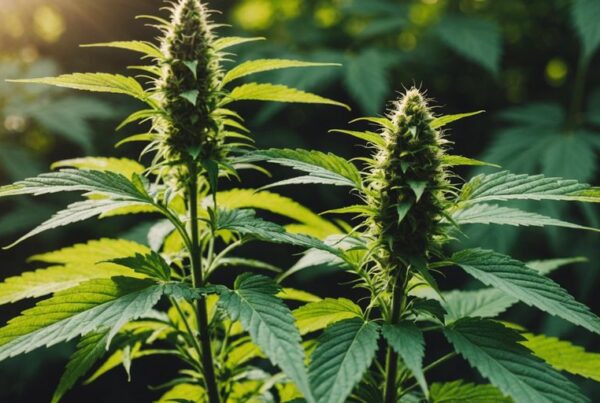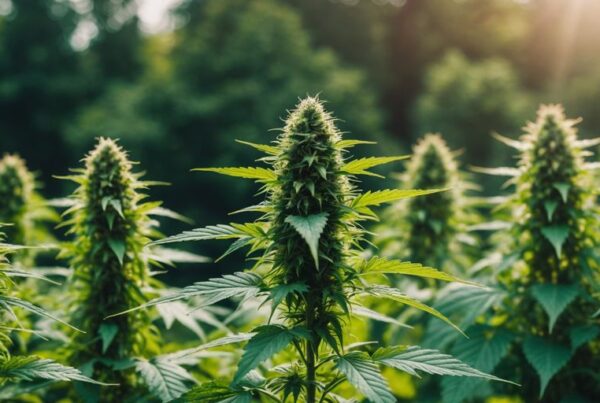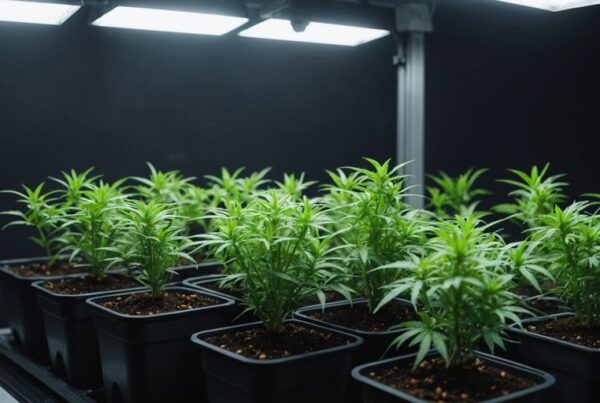Introduction
Cannabis cultivation faces numerous challenges, and one of the most persistent is pest diseases. Understanding and managing these diseases is crucial for ensuring healthy and productive cannabis plants. In this article, we’ll explore common cannabis pest diseases, their symptoms, prevention methods, and treatments.
Common Cannabis Pest Diseases
1. Powdery Mildew Powdery mildew appears as white, powdery spots on the leaves and stems of cannabis plants. It’s caused by high humidity and poor air circulation. Affected plants often exhibit reduced growth and vigor.
2. Spider Mites Spider mites are tiny pests that cause speckled leaves and webbing on the plants. They thrive in hot, dry conditions. Infestations can lead to leaf drop and overall plant stress.
3. Aphids Aphids are small, green insects that suck the sap from cannabis plants, leading to curled leaves and stunted growth. They excrete a sticky substance called honeydew, which can attract mold and other pests.
Prevention Methods
- Genetic Selection: Using cannabis genetics to select resistant strains can help in reducing susceptibility to diseases.
- Disease Prevention: Implementing disease prevention techniques such as proper spacing, pruning, and regular monitoring is crucial.
- Soil Microbiology: Utilizing soil microbiology for cannabis to maintain healthy soil and support plant immune systems.
Treatment Options
- Biological Control: Introducing beneficial insects like ladybugs can help control aphid populations.
- Organic Sprays: Neem oil and insecticidal soaps can effectively manage pests without harming the plants.
- Chemical Treatments: In severe cases, chemical pesticides may be necessary, but they should be used as a last resort and with caution.
Additional Cannabis Pest Diseases
4. Fusarium Wilt Fusarium wilt is a soil-borne fungal disease that causes wilting and yellowing of leaves, often leading to plant death. It thrives in warm, moist environments and can be particularly devastating if not managed early.
5. Root Aphids Root aphids attack the roots of cannabis plants, causing yellowing, wilting, and stunted growth. They are challenging to detect early as they reside in the soil, making regular root inspections essential.
Prevention Strategies for Additional Diseases
- Sanitation: Keeping the growing area clean and free from plant debris helps prevent the spread of diseases like Fusarium wilt.
- Healthy Root Systems: Ensuring healthy roots through proper watering practices and avoiding overwatering can deter root aphid infestations.
Treatment Strategies for Additional Diseases
- Soil Drench: Applying a soil drench with beneficial nematodes can help control root aphids by targeting them in the soil.
- Fungicides: Using organic fungicides can help manage Fusarium wilt, though prevention is more effective than treatment.
Integrated Pest Management (IPM)
Integrated Pest Management (IPM) is a comprehensive approach that combines multiple strategies to manage pests effectively and sustainably. Key components of IPM include:
- Regular Monitoring: Regularly inspect plants for signs of pests and diseases.
- Cultural Practices: Implement practices such as crop rotation, intercropping, and maintaining plant diversity to reduce pest populations.
- Biological Control: Use natural predators and beneficial microorganisms to keep pest populations in check.
- Mechanical Control: Employ physical barriers, traps, and manual removal to manage pests.
- Chemical Control: Use pesticides as a last resort, selecting products that are least harmful to the environment and beneficial organisms.
Steps to Implement IPM
- Assessment: Begin by assessing the current pest and disease situation in your cannabis garden. Identify the types of pests present, their population levels, and the extent of damage.
- Plan: Develop an IPM plan that outlines the specific strategies and actions you will take to manage pests and diseases. This plan should include preventive measures, monitoring schedules, and treatment options.
- Implement: Put your IPM plan into action. Ensure that all team members involved in the cultivation process are aware of the plan and their roles in its implementation.
- Evaluate: Regularly evaluate the effectiveness of your IPM plan. Adjust your strategies as needed based on the results of your monitoring and assessment.
Benefits of IPM for Cannabis Cultivation
- Sustainability: IPM promotes sustainable cultivation practices by reducing reliance on chemical pesticides and minimizing environmental impact.
- Cost-Effectiveness: By preventing pest problems before they become severe, IPM can save growers money on expensive treatments and crop losses.
- Improved Crop Health: Healthy plants are more resistant to pests and diseases, leading to higher yields and better-quality cannabis.
Effective Monitoring Techniques
Effective monitoring is essential for early detection and management of cannabis pest diseases. Implementing regular inspection routines and utilizing appropriate tools can significantly enhance pest control efforts.
Visual Inspections
Regular visual inspections involve examining plants closely for signs of pests and diseases. Look for symptoms such as discoloration, wilting, leaf spots, and the presence of insects. Use magnifying tools to identify small pests like spider mites and aphids.
Sticky Traps
Sticky traps are useful for monitoring flying insects such as whiteflies and fungus gnats. Place yellow or blue sticky traps near plants to capture these pests. Regularly check and replace traps to maintain their effectiveness.
Soil Testing
Soil testing helps detect soil-borne pathogens and pests. Collect soil samples and send them to a laboratory for analysis. This can identify the presence of root aphids, nematodes, and fungal pathogens like Fusarium.
Digital Monitoring Tools
Utilize digital monitoring tools such as pest detection apps and automated sensors. These tools can provide real-time data on environmental conditions and pest activity, enabling timely interventions.
Natural Predators for Biological Control
Using natural predators is an environmentally friendly way to manage pest populations in cannabis cultivation. Introducing beneficial insects can reduce the need for chemical pesticides and support a balanced ecosystem.
Ladybugs
Ladybugs are effective predators of aphids, spider mites, and whiteflies. Release ladybugs into your cannabis garden to control these pests naturally.
Predatory Mites
Predatory mites such as Phytoseiulus persimilis and Neoseiulus californicus are used to control spider mite infestations. These mites feed on spider mites, reducing their populations.
Parasitic Wasps
Parasitic wasps, like Encarsia formosa and Aphidius colemani, target whiteflies and aphids. These wasps lay their eggs inside the pests, eventually killing them.
Nematodes
Beneficial nematodes, such as Steinernema feltiae, can be applied to soil to control root aphids and other soil-dwelling pests. They infect and kill the pests without harming plants.
Organic Treatments for Cannabis Pests
Organic treatments are preferred by many cannabis growers for their safety and environmental benefits. Here are some effective organic treatments for common cannabis pests:
Neem Oil
Neem oil is a natural pesticide derived from the neem tree. It is effective against aphids, spider mites, and whiteflies. Apply neem oil as a foliar spray, ensuring thorough coverage of leaves and stems.
Insecticidal Soap
Insecticidal soap is a safe and effective treatment for soft-bodied pests like aphids and spider mites. It works by disrupting the cell membranes of the pests. Spray insecticidal soap directly on affected plants.
Diatomaceous Earth
Diatomaceous earth is a natural powder made from fossilized algae. It is used to control crawling insects like root aphids and thrips. Sprinkle diatomaceous earth around the base of plants and on the soil surface.
Conclusion
By understanding and implementing effective prevention and treatment strategies, cannabis growers can mitigate the impact of pest diseases and ensure healthy plant growth. Regular monitoring and using integrated pest management practices are key to maintaining a thriving cannabis garden.







